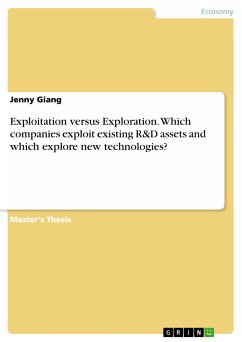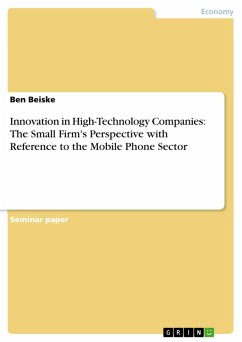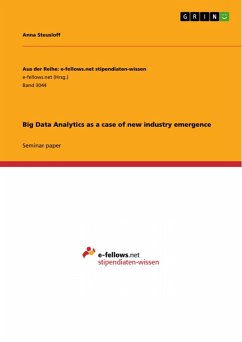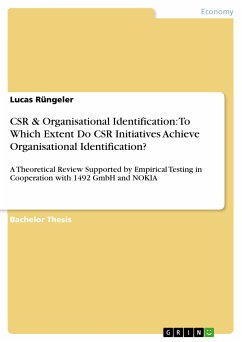Master's Thesis from the year 2019 in the subject Business economics - Miscellaneous, grade: 1,3, RWTH Aachen University, language: English, abstract: Innovation is a key driver for companies' long-term success. Although, all companies can be distinguished as innovative in some form, they differentiate significantly in their strategy or activity to pursue innovation. There exist two types of activities, the explorative one on the one hand and the exploitative one on the other hand. The explorative one is applied by firms that invest heavily in research and explore new areas of technology. One example is Google, which grew from the pure search engine into a firm that developed an image-recognition application, autonomous vehicle technology and broadband services. Alternatively, the exploitative activity is applied when firms invest in deepening their knowledge in specific areas and become top market leaders. Samsung for example is an expert in electronics for consumer goods such as TV, mobile phones, LCD and LED panels and semiconductors. The focus of this master thesis is to define and to understand the two groups of explorative and exploitative innovators and determine when, and under which circumstances, a type is more successful than the other. In order to do so, the data on large firms' innovation strategy, which is available in their patent portfolio, are collected and investigated. The collected patents are classified according to the following criterion: is the patent a radical innovation or just an incremental add-on? The data source is acquired from Google Patents which has become a dominant source in innovation research. Results indicate that for some cases there is some evidence for a positive relationship between an innovation orientation of the firm associated with higher degree of exploration and financial performance measured in stock return. This is particularly the case for firms which own patents citing other patents outside its own technological class. With the given sample, there is no evidence for technological dynamism in an environment to moderate the relationship. This empirical assessment gives implications for further research.
Dieser Download kann aus rechtlichen Gründen nur mit Rechnungsadresse in A, B, BG, CY, CZ, D, DK, EW, E, FIN, F, GR, HR, H, IRL, I, LT, L, LR, M, NL, PL, P, R, S, SLO, SK ausgeliefert werden.









